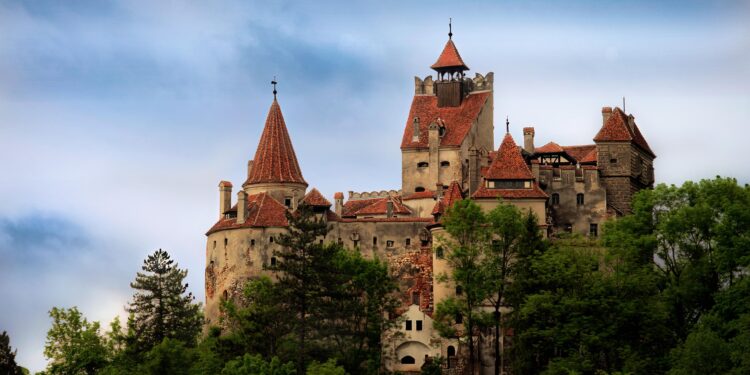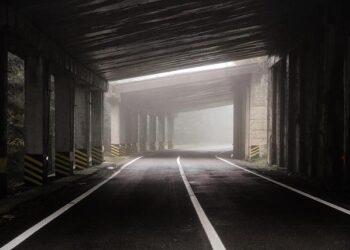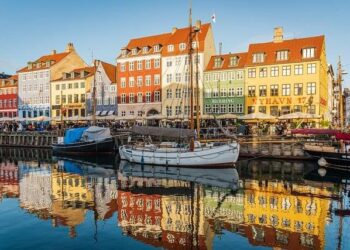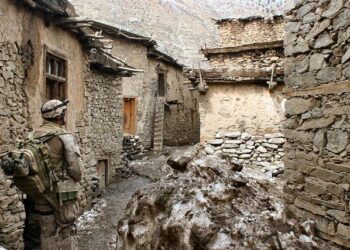Visitors seeking a blend of history and legend can now explore one of Romania’s most iconic landmarks firsthand. Dracula’s Castle, perched atop the rugged cliffs of Transylvania, offers an immersive experience into the world that inspired Bram Stoker’s infamous vampire tale. This enduring symbol of medieval intrigue and Gothic lore has opened its doors to travelers, inviting them to walk through the corridors where myth and reality intertwine. In this article, we delve into what makes a tour of Dracula’s Castle a must-see attraction for history buffs and thrill-seekers alike.
Experience the Enigmatic History and Architecture of Dracula’s Castle in Transylvania
Perched high on a rugged cliff in the heart of Transylvania, Bran Castle beckons travelers eager to unravel its centuries-old mysteries. Often linked to the legend of Vlad the Impaler, the real-life inspiration for Bram Stoker’s Dracula, this fortress seamlessly blends history with gothic allure. Visitors walk through dimly lit corridors and spiral staircases, encountering artifacts that echo tales of medieval warfare and royal intrigue. The imposing stone walls and narrow windows serve as reminders of the castle’s strategic importance during turbulent times in Eastern Europe.
A guided tour reveals the castle’s architectural evolution, showcasing fortifications from the 14th century alongside later renovations that added residential comforts. Highlights of the visit include:
- Original wooden furniture and weapon collections
- The queen’s chambers adorned with traditional Transylvanian decor
- Hidden passageways used for escape and defense
- A panoramic terrace offering breathtaking views of the surrounding Carpathian Mountains
| Feature | Era | Purpose |
|---|---|---|
| Fortified Walls | 14th Century | Defense against invaders |
| Royal Chambers | 17th Century | Residence of nobility |
| Secret Passage | Medieval Period | Escape routes |
| Watchtower | 15th Century | Surveillance |
Inside the Legendary Fortress Exploring Key Rooms and Hidden Passages
Visitors stepping into this ancient stronghold are immediately transported to a world steeped in myth and history. The massive stone corridors echo with tales of intrigue, power, and mystery. Among the must-see highlights is the torture chamber, where chilling artifacts and reconstructed devices evoke the darker chapters of the fortress’s past. Adjacent lies the imposing Armory Room, housing centuries-old weapons and armor, testaments to the castle’s strategic significance throughout the medieval era. Each room offers a unique glimpse into both the daily life and the shadowy legends surrounding the castle’s most infamous occupant.
What truly captivates explorers are the labyrinthine hidden passages weaving throughout the fortress walls. These concealed routes were originally designed for secret escapes and covert movements during sieges. Today, they serve as enigmatic pathways revealing the architectural ingenuity of the era. A recent study identified several newly discovered tunnels thanks to advanced 3D mapping technology, soon to be accessible to tourists. Here’s a quick overview of key rooms and their unique features:
| Room | Notable Features | Visitor Access |
|---|---|---|
| Vlad the Impaler’s Chamber | Original wooden beams, mysterious inscriptions | Restricted guided tours only |
| Castle Chapel | Gothic frescoes, stained glass windows | Open to all visitors |
| Secret Tunnels | Hidden entrances, underground passages | Special permission required |
| Grand Hall | Medieval banquet setup, heraldic banners | Open during events and festivals |
Tips for Visitors How to Make the Most of Your Tour in Romania’s Iconic Landmark
Exploring Dracula’s Castle, also known as Bran Castle, demands a bit of strategic planning to truly capture its haunting charm. Arrive early, preferably right at opening time, to avoid the midday crowds and enjoy the atmospheric rooms with fewer distractions. Be sure to wear comfortable shoes, as the castle’s steep staircases and uneven floors require careful navigation. Booking a guided tour or using an audio guide can enrich your visit by shedding light on the myths versus historical facts surrounding the fortress and Vlad the Impaler, the real-life inspiration behind the Dracula legend.
Beyond the castle walls, don’t miss the chance to explore the vibrant village markets nearby where you can pick up authentic handcrafted souvenirs and sample traditional Romanian treats. Capture panoramic views from the castle’s battlements, and remember to bring a camera or smartphone for the perfect shot. Here are a few quick tips to enhance your trip:
- Visit off-season to enjoy a quieter atmosphere and lower prices.
- Check the weather – winter visits offer a mystical vibe, while spring reveals lush landscapes.
- Combine your visit with nearby attractions such as Rasnov Fortress or Peles Castle for a comprehensive Transylvanian experience.
| Best Time to Visit | Reasons |
|---|---|
| April – June | Mild weather, blooming scenery, fewer tourists |
| September – October | Crisp air, fall colors, festive local events |
| November – March | Snowy landscapes, eerie atmosphere, off-season rates |
The Way Forward
Visiting Dracula’s Castle in Transylvania offers more than just a glimpse into a legendary tale; it provides an immersive journey through history, architecture, and local folklore. Whether you’re a fan of Bram Stoker’s infamous vampire or simply curious about Romania’s rich cultural heritage, touring this iconic fortress combines education with intrigue. As tourism continues to revive interest in the region, travelers have a unique opportunity to explore the enduring myths and majestic landscapes that make Dracula’s Castle a must-see destination.
















